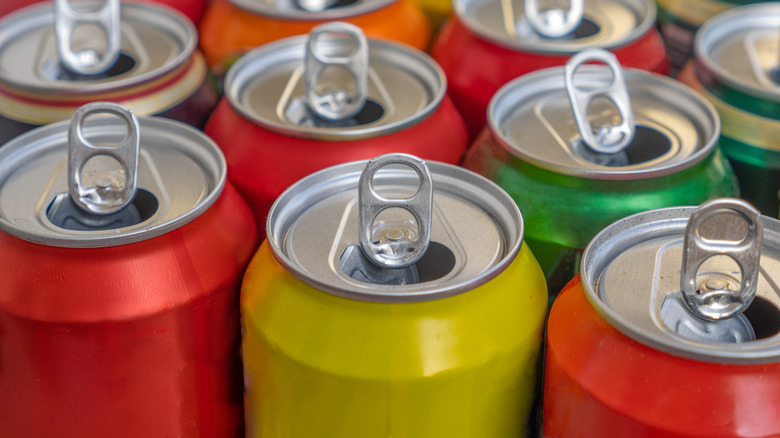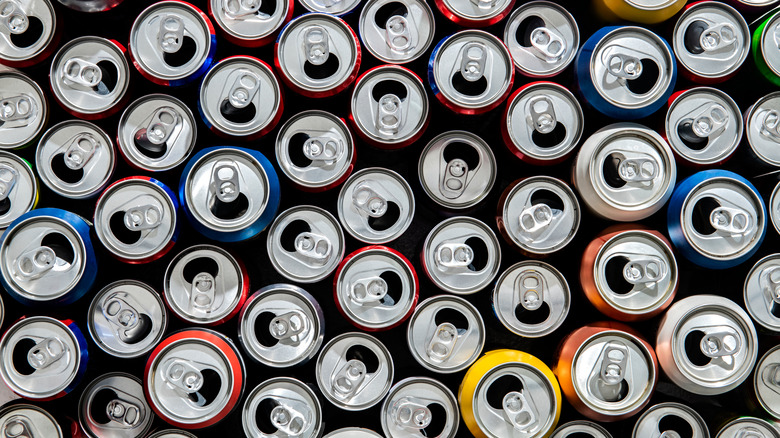Why Did The Tabs On Beverage Cans Change?
On a hot summer day, there can be nothing more satisfying than reaching for a cold, carbonated drink (just be careful not to freeze it for too long). But did you know the iconic tab can opening, commonly used for soft drinks or beer, has gone through some major upgrades throughout the years?
Western Digs shares the original design can now be considered a historical artifact since it has passed the 50-year threshold. Invented in 1959, machine tool operator and inventor Ermal Fraze changed the beverage industry forever by figuring out how to attach the tab to the top of a can. According to Ohio History Central, prior to this pull-top invention, cans required a separate opener called a church key. Now, drinkers could simply remove part of the can to drink from a tear-shaped opening.
But there was a flaw in Fraze's design, which eventually led to the beverage can tab you're familiar with today.
What inspired the change?
After several reports of people swallowing the removable metal tabs and suffering from injuries, and an increase in littering, Western Digs says the ring tab design was phased out starting in 1975. (This is why these removable tabs may even be able to help identify historical sites: finding remnants of pull tab cans can help archaeologists figure out the specific time frame events took place.) The Sta-Tab — invented by Reynolds engineer Daniel F. Cudzik — was patented that very same year (via Slate).
Although these tabs can be removed with some effort, they are designed to remain on the cans after opening to be recycled instead of creating more litter. (Unfortunately, Slate says the issue of people swallowing tabs hasn't gone away entirely — 19 children swallowed the tabs in 2010 and had to be seen at a pediatric hospital).
Although it's seen a few small improvements, this Sta-Tab design is still the same one often used on aluminum drink cans today. While Cudzik explained to WNYC's Studio 360 in 2011 he doesn't think there is much from the current design to be improved upon, who knows what the future will bring.

